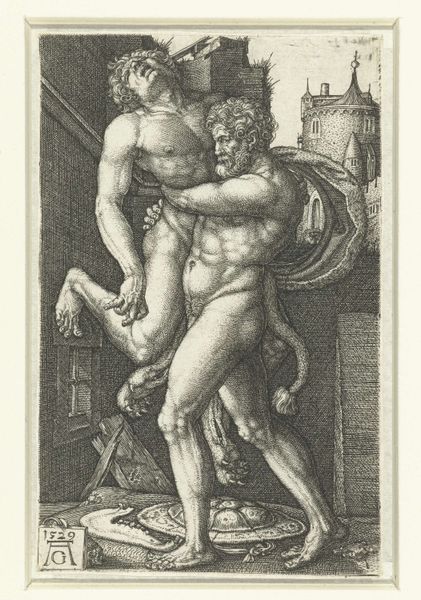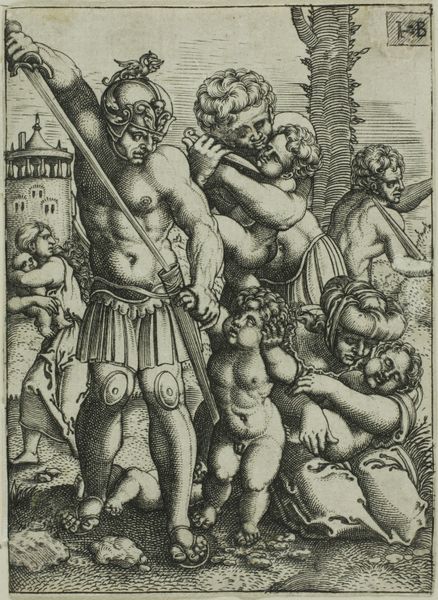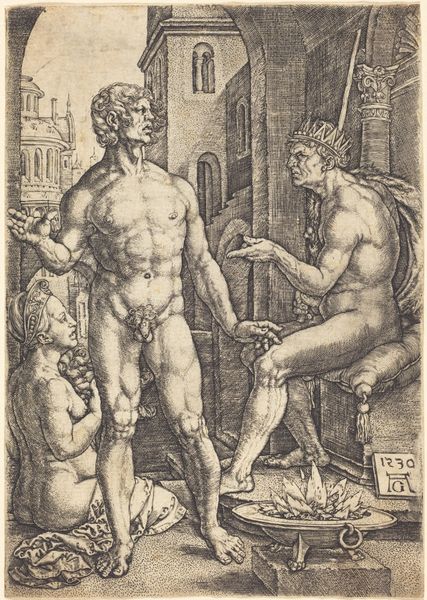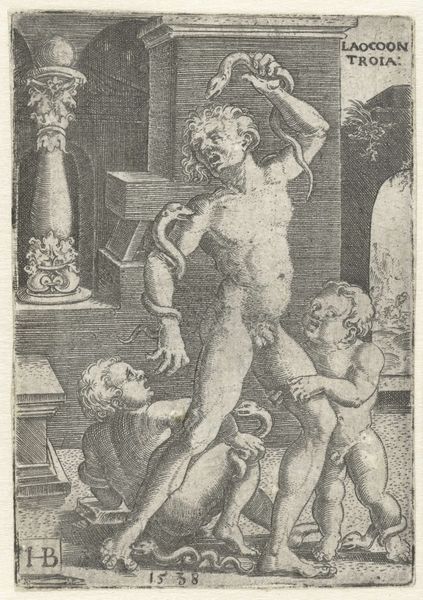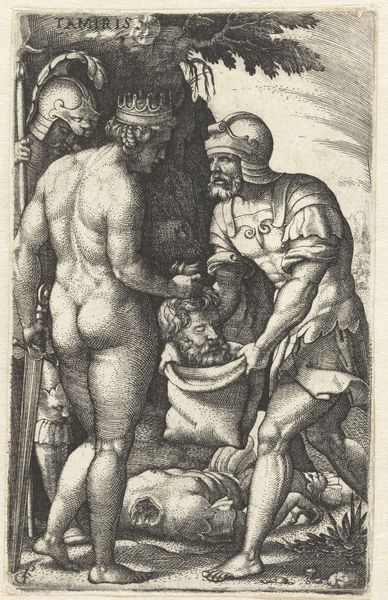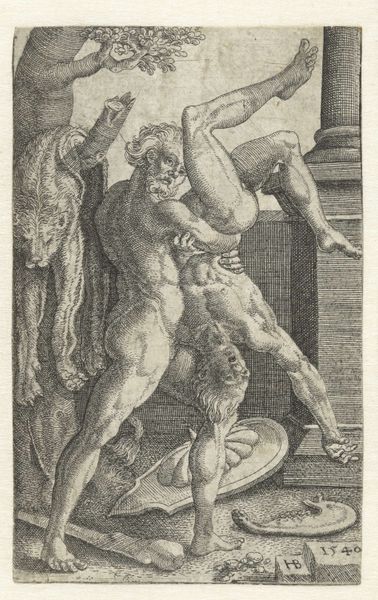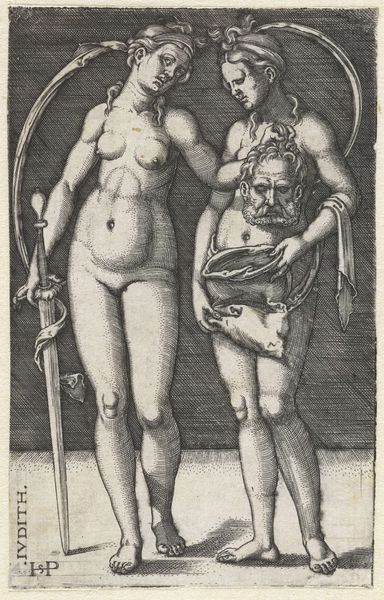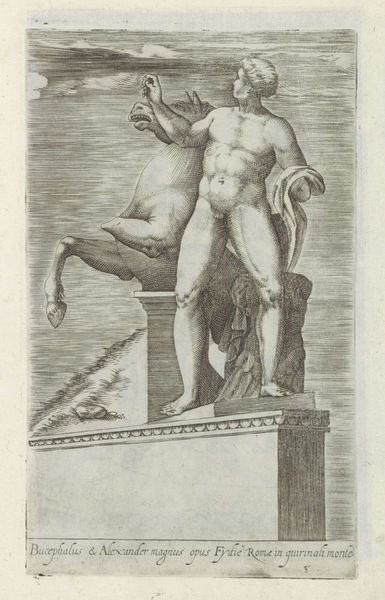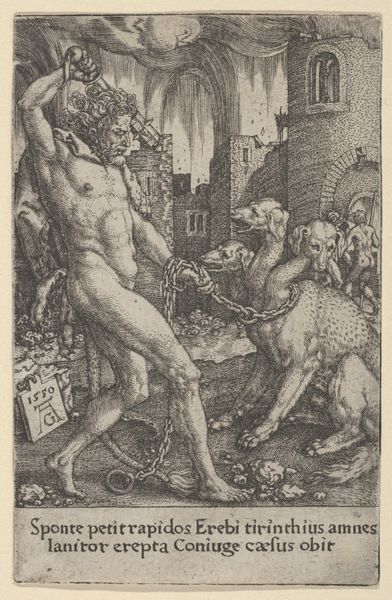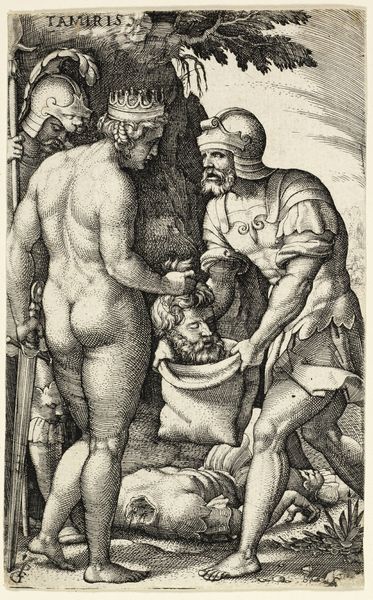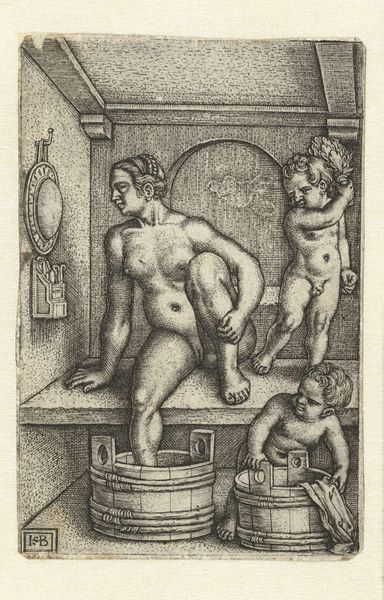
print, engraving
# print
#
old engraving style
#
figuration
#
11_renaissance
#
mythology
#
history-painting
#
northern-renaissance
#
nude
#
engraving
Dimensions: height 98 mm, width 63 mm
Copyright: Rijks Museum: Open Domain
Curator: Ah, this engraving. There’s something about these early prints; they manage to capture an entire world within a tiny space. Editor: Yes, a little stiff, but intense, too. Is that the great god Jupiter himself, giving a back massage with a spear to Cupid? Or are they competing for the next summer collection advertisement? Curator: Almost! It’s called "Jupiter," crafted in 1533 by Heinrich Aldegrever. And Cupid isn't getting a massage with the spear: he has got his own tiny bow and is aiming, like father like son. It’s part of the Rijksmuseum's collection now. What grabs you most about it visually? Editor: The stark contrast! It’s all lines, precise and unwavering. The way the light and shadow define their muscles, creating volume out of almost nothing... Remarkable control of the medium, which I understand it’s engraving. Curator: Definitely! Aldegrever was a master of detail. You’ve got the bulging muscles of Jupiter set against the delicate texture of the architecture, including this tiny, intricate depiction of buildings and townscapes in the background. Look closely, and you can practically get lost in those lines, constructing a believable world only using shades of black. Editor: It reminds me how Northern Renaissance artists wrestled with classical themes and ideals, making them look rather… grounded, wouldn't you agree? A bit too… human, if you ask me. There is some struggle. Curator: Right! Jupiter looks more like a strongman from the local fair. He's wearing this silly little crown… but his musculature, the intensity in the rendering… It's a funny clash of styles and aspirations. Perhaps he's contemplating what it really means to be all-powerful with all these burdens. And I am quite happy this ambiguity survives throughout the years. Editor: Ultimately, what remains are just masterful lines and the tension that comes with a perfect balance between classical ambitions and local idioms. Thank you. Curator: Thank you too, for seeing it with fresh eyes.
Comments
No comments
Be the first to comment and join the conversation on the ultimate creative platform.


